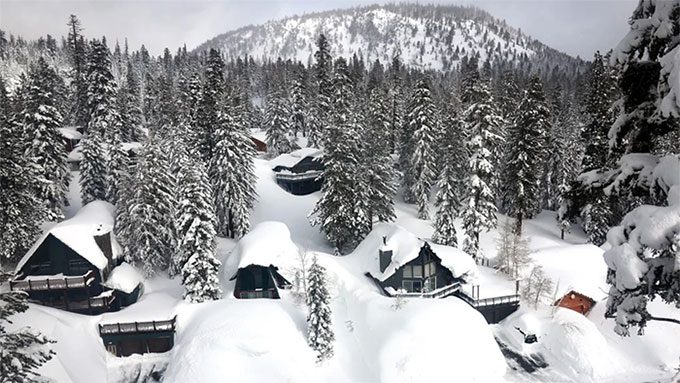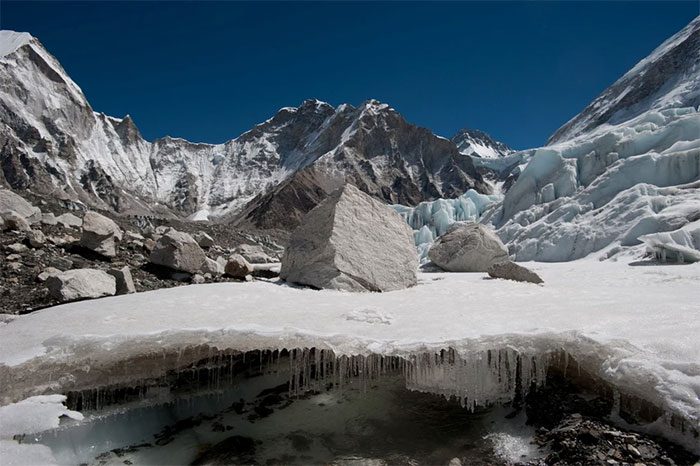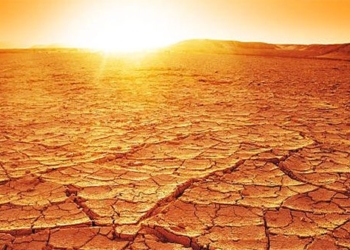The disappearance of snow could exacerbate global warming, causing difficulties for people in regions dependent on melting snow.
According to a recent study by the National Oceanic and Atmospheric Administration (NOAA), global snowfall is decreasing, as reported by CNN. Scientists believe that the primary cause of diminishing snow is rising global temperatures, driven by climate change.
Researchers suggest that in the coming years, climate change could lead to more severe winter storms, and snowfall may increase in some years. However, in the long term, scientists predict that if the Earth continues to warm, snow will decline.

Snow in the Sierra Nevada mountains, California (USA). Recent research at NOAA indicates a significant amount of snow has disappeared recently. (Photo: GETTY IMAGES).
Unpredictable Impacts of Snow Disappearance
Brian Brettschneider, a climate scientist at NOAA in Alaska, cites data from the European Union’s Copernicus Climate Change Service, showing that global annual snowfall has decreased by 2.7% since 1973.
The disappearance of snow is a concerning phenomenon.
This decreasing trend in snowfall is particularly notable in the mid-latitude regions of the Northern Hemisphere, which lies between the northern tropics and the southern Arctic, including the United States.
The sun in this area shines more directly on the ground compared to higher latitudes, especially in spring and autumn when snow is still present. The white color of snow acts like a car’s sunshade, reflecting sunlight and sending heat back into space.
If snow disappears, the ground must absorb more sunlight, causing the atmosphere to warm.
“Ultimately, the laws of physics will show that as the Earth continues to warm, more snow will disappear or turn into rain. Everything can change in an instant,” Brettschneider said.
The loss of snow could threaten the food and drinking water supplies of billions of people.
Less snowfall also means less ice formation.
Jessica Lundquist, an environmental engineering professor at the University of Washington, stated that snowpack is vital for water supply as it acts like a natural reservoir. Water is stored in the form of snow and is then released when temperatures rise.

A snowstorm in Morristown, New Jersey (USA). (Photo: AP).
Lundquist mentioned that coastal regions in California and other areas in the western United States will be heavily impacted as snowpack declines.
“California is a prime example. It doesn’t rain in the summer in California, and therefore, the amount of snowmelt is crucial for all ecosystems, agriculture, cities, or anyone who needs water during the dry season,” Lundquist said.
A 2017 study found that snowpack accounts for over 50% of the water supply for the western United States. The study also predicted that snowpack in this region would continue to decrease by more than a third by 2100 if temperatures continue to rise.
Justin Mankin, a climate scientist at Dartmouth College, stated that snowfall will not decrease in a gradual trend. Instead, there will be some years with significantly lower snowfall than others. This means that when a certain temperature threshold is reached, snow will decrease rapidly.
“This means that many places will start to see reduced snowfall in the future as temperatures begin to rise,” Mankin said.
Challenges in Water Management Due to Reduced Snow
Mankin noted that the impact of reduced snowfall on global water supply is very complex, heavily dependent on where the snow is located and various other influencing factors.
He indicated that one of the most important factors is the water content in the snow, which varies based on the snow’s characteristics. Light, powdery snow has low water content, while dense snow has high water content.
A 2015 study by Mankin indicated that 2 billion people rely on snowmelt for water and are at high risk of being severely affected. These individuals are located in areas in South Asia (near the Himalayas), the Mediterranean (Spain, Italy, and Greece), and some regions in North Africa, where they depend on snowmelt from the Atlas Mountains.
However, Mankin stated that this study did not address water management and did not indicate alternative water sources for the lost snow.
“The loss of snow presents a major management challenge. This is not necessarily an insurmountable challenge everywhere, but it is significant, especially in places that heavily rely on snowmelt for water, like the western United States.”

Khumbu Glacier in Nepal. (Photo: REUTERS).
Both Mankin and Lundquist noted that many studies are being conducted to better understand the relationship between snow and water supply. This research will help managers plan more effectively to address the issue of snow disappearance.
“It’s not easy to find a simple solution. Addressing this issue will require a combination of solutions and funding at various scales. However, solutions can only be developed once we understand and define the scope of the problem,” Mankin said.
Additionally, according to Mankin, if authorities in various countries continue to manage water in the existing way, climate change will prove them wrong.




















































